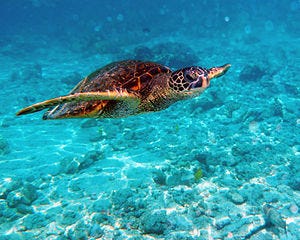
The Delhi High Court has by a recent ruling touched upon the difference in legal treatment between different communication mediums. This is in specific reference to the pleas of cyber libel raised by the TATA group against Greenpeace for designing and publishing, the “TATA v. Turtle”, online pac-man style game (read more on the game here).
Justice S. Ravindra Bhat, authoring the judgment noted that, though the internet has a wider reach and potential for injury, traditional standards for the grant of injunctions in cases of libel will be applicable. The court reasoned that these traditional standards are well developed and there is no constitutional mandate which allows the court to create a differentiation. If this reasoning is strictly applied it would mean that the conventional rules of defamation will be applied in cases of internet defamation. If applied liberally, courts may in cases of a legislative vacuum, apply other developed legal principles without differentiation.
An extract of the judgment is given below:
“39. It would be apparent from the above discussion that publication is a comprehensive term, embracing all forms and mediums — including the Internet. That an internet publication has wider viewership, or a degree of permanence, and greater accessibility, than other fixed (as opposed to intangible) mediums of expression does not alter the essential part, i.e. that it is a forum or medium. Even the Ontario Court of Appeals, in Barrick Gold, while recognizing the wider impact and reach of cyber libel, did not moot a different standard for granting injunction, as is sought in this case. The Court there ruled, pertinently, that Internet publication of a libel, because of the libel’s wider reach and viewership, has to be considered as an additional factor, while assessing damages. However, the judgment is not an authority to say that internet libels or cyber libels call for application of a different injunction standard, other than the Bonnard rule. The Court does not discern any such discussion; adopting such an argument would result in the anomaly of discriminating between one medium of expression and another, in assessing whether to grant temporary injunction restraining publication — which is neither salutary, or as this Court suspects, Constitutionally sanctioned.”
While the free speech concerns are satisfied in this specific case, if one goes through instances recounted by Vikram Raghavan (quoted in this paper on pages 15–16), courts have applied different standards in the past with respect to censorship of broadcast media. This is especially evident in the K.A. Abbas judgment where the Hon’ble Supreme Court stated, “It must, however, be remembered that the, cinematograph is a powerful medium and its appeal is different. The horrors of war as depicted in the famous etchings of Goya do not horrify one so much as the same scenes rendered in colour and with sound and movement, would do.”
Hence, there is much sense to have more defined criteria taking into account the nature of the internet content. This point is labored on since there is a sense as to the abuse of interim injunctions as pointed out in the Zone-H case commented on earlier. It has been our view that injunctions on internet content should not be readily granted (especially ex-parte) since, firstly the internet is an easy, self publishing platform providing a medium of expression for marginal individuals not having corporatized outlets. Secondly, the internet facilitates the distribution of content for a minor cost to a vast audience. Both the alleged injury and the free speech concern are greater due to the wider dissemination of the content. These are only some of the concerns which set the internet apart and it is desirable to have a nuanced appreciation.
Judgement of Tata Sons v. Greenpeace International
[ipaper id=49541470]